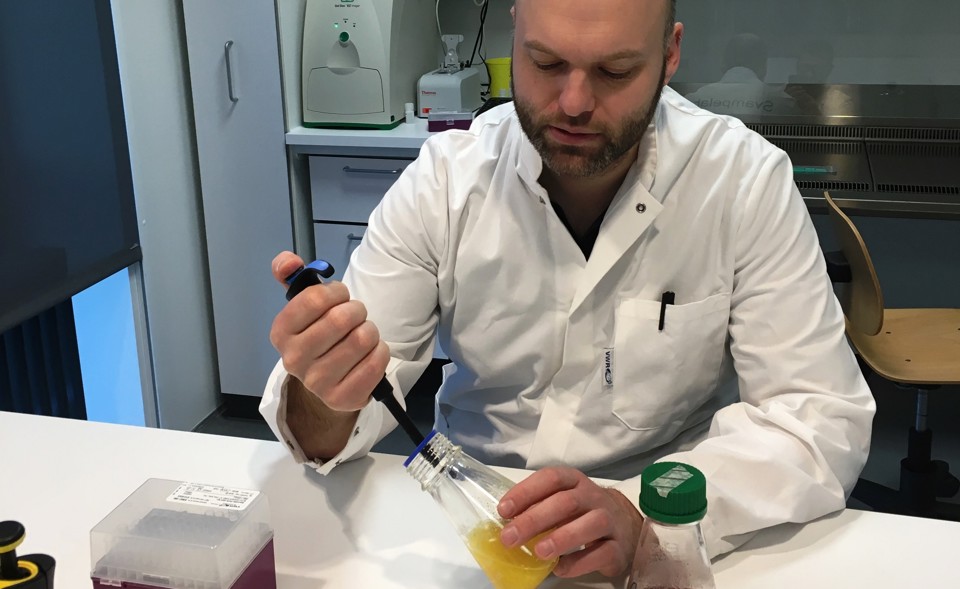In redox-flow batteries, the electroactive substances are placed in containers outside the electro-chemical reactor cell that contains electrodes, and which is the place where the actual electron transmission takes place.
- “In our setup, we place our fungal quinones in large containers next to the electro-chemical cell, which allows us to scale the size of the containers according to how large power capacity we need. The separation of the electroactive quinones from the reactor cell furthermore allows us to pump the quinones through the electro-chemical cell whenever we need to, thereby triggering the electron transmission to either release power or recharge the quinones. Thus, we have much larger control of both how much of the electroactive substance we can have present; how much we want or need to charge the battery – for instance, do we need to store energy from a huge windmill farm or from a single-house solar-power-cell system – as well as how much power we want to release at any given point in time” Jens Muff adds.
- “Being able to control these parameters provides redox-flow batteries with the potential to be used at a very large scale, but the only reason that we even dare to consider using them at the necessary scale is that the substances used are biodegradable and comparatively harmless. In theory, we can simply pour them out into the sewer system when we are done using them. If we were to use for instance Lithium batteries at the scale we are talking about, they would cause a catastrophe if they sprung a leak. What our setup provides is an energy-storage solution that is both sustainable, organically-produced, scalable and environmentally-friendly” he emphasises.
Unique collaboration leads to unique solution
As a first step in the research on the fungus-quinone-based redox-flow battery technology, the researchers supervised groups of Bachelor’s students who carried out tests of different elements of the battery setup.
- “Because of AAU’s project-based learning method, our students are very experienced in terms of laboratory work, both in theory and in practice. This means that we could test elements of our idea through our student groups. I had groups focusing on the production of quinones from fungi, and Jens Muff had groups working on the battery technology. We also created a cross-disciplinary group of skilled Bachelor’s students to test the setup at a small scale, which gave us a proof of concept that showed that it can actually work in practice. We used this proof of concept as one of the arguments in the project application that led to our recent grant from the Independent Research Fund Denmark for a four-year research project where we will be conducting research on the concept along with two PhD students” Jens Laurids Sørensen says.
The researchers have also submitted a project application to the Novo Nordisk Foundation along with a consortium of other researchers, including researchers from German and Scottish universities, as well as AAU’s own Department of Energy Technology in Aalborg.
- “While the redox-flow battery technology has been known since the 1970’s, and a research team at some of the foremost American universities proved in 2012 that quinones can be utilised in batteries, as far as we know no one has created a fungus-quinone-based redox-flow battery in the way we are proposing. Energy storage is increasingly verbalized as THE challenge we need to solve in order for it to make sense to continue working towards using only sustainable energy sources in the future. We believe this technology can solve that challenge for major wind turbine farms and photovoltaic power stations all over the world, and the fact that it is both organically produced and biodegradable makes the battery technology itself a sustainable element in the global power production and consumption system. We hope that our recent research grant will be the first of many that will let us see energy storage by quinone-based redox-flow batteries become the key to global conversion to sustainable energy sources in the future” Jens Muff finishes.
